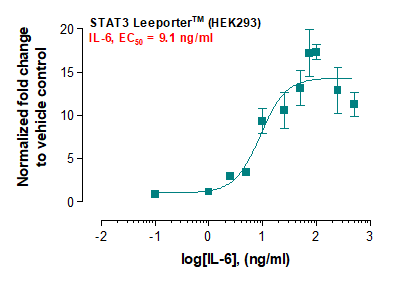Noggin HEK Recombinant Protein(Discontinued)
Shipping Info:
For estimated delivery dates, please contact us at [email protected]
| Amount : | 10 µg |
| Purification : | Greater than 95% as obsereved by SDS-PAGE. |
| Content : | The Noggin was lyophilized from 1mg/ml in 1xPBS. |
| Storage condition : | Lyophilized Noggin although stable at room temperature for 3 weeks, should be stored desiccated below -18°C. Upon reconstitution Noggin should be stored at 4°C between 2-7 days and for future use below -18°C.For long term storage it is recommended to add a carrier protein (0.1% HSA or BSA).Please prevent freeze-thaw cycles. |
| Alternative Name : | SYM1, SYNS1, NOG. |
Source : HEK.
Noggin Human Recombinant produced in HEK cells is a glycosylated homodimer, having a total molecular weight of 65kDa.The Noggin is purified by proprietary chromatographic techniques.
The secreted polypeptide noggin, encoded by the NOG gene, binds and inactivates members of the transforming growth factor-beta (TGF-beta) superfamily signaling proteins, such as bone morphogenetic protein-4 (BMP4). By diffusing through extracellular matrices more efficiently than members of the TGF-beta superfamily, noggin may have a principal role in creating morphogenic gradients. Noggin appears to have pleiotropic effect, both early in development as well as in later stages. It was originally isolated from Xenopus based on its ability to restore normal dorsal-ventral body axis in embryos that had been artificially ventralized by UV treatment. The results of the mouse knockout of noggin suggest that it is involved in numerous developmental processes, such as neural tube fusion and joint formation. Recently, several dominant human NOG mutations in unrelated families with proximal symphalangism (SYM1) and multiple synostoses syndrome (SYNS1) were identified; both SYM1 and SYNS1 have multiple joint fusion as their principal feature, and map to the same region (17q22) as NOG. All NOG mutations altered evolutionarily conserved amino acid residues. The amino acid sequence of human noggin is highly homologous to that of Xenopus, rat and mouse.
It is recommended to reconstitute the lyophilized Noggin in sterile water not less than 100µg/ml, which can then be further diluted to other aqueous solutions. The specific activity was determined by the dose dependent inhibition of rhBMP4 induced alkaline phosphate production by ATDC5 cells and is typically 20-100ng/ml.
For Research Use Only. Not for use in diagnostic/therapeutics procedures.
|
There are currently no product reviews
|


















.png)











